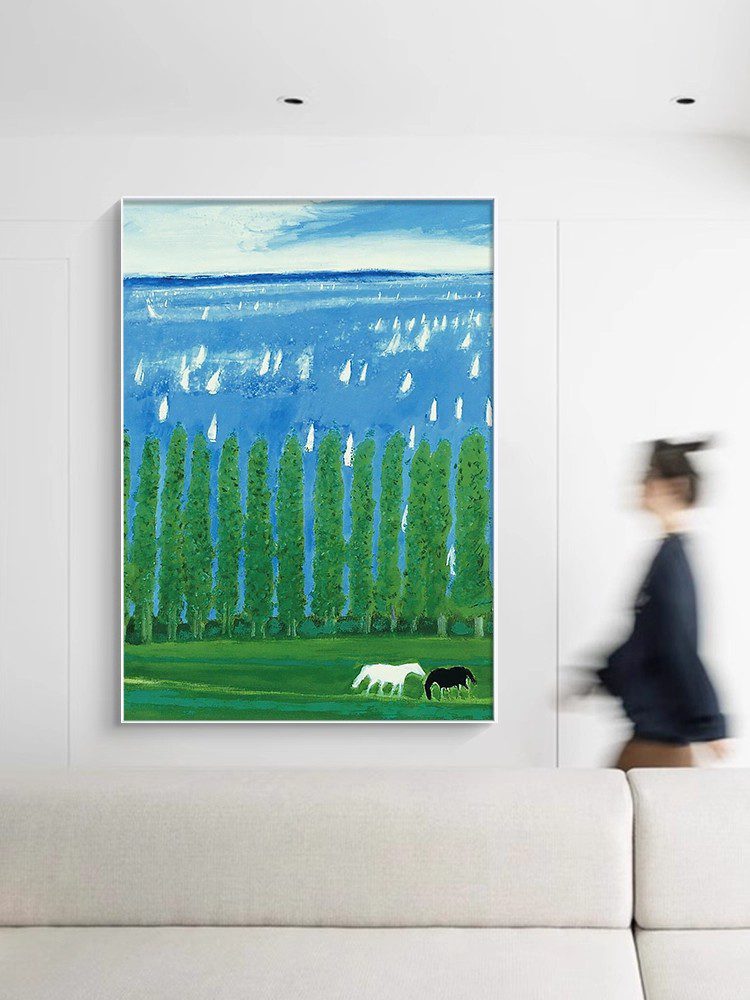Resolving Dull or Grayish Tones in Hand-Painted Oil Artworks
Oil paintings occasionally develop a muted, grayish appearance, diminishing vibrancy and depth. This issue often stems from pigment mixing errors, environmental factors, or layering techniques. Understanding the causes and applying targeted adjustments helps restore clarity and intensity to the artwork.
Common Causes of Grayish Tones in Oil Paint
One frequent culprit is improper pigment mixing. When artists combine complementary colors—such as red and green or blue and orange—in equal proportions, they neutralize each other, creating dull, grayish hues. This phenomenon, known as chromatic neutralization, occurs because complementary pairs cancel out brightness, leaving a flat, desaturated result. Even unintentional blending of trace amounts of opposites on the palette can lead to unintended graying.
Another factor is the use of low-quality or stale pigments. Over time, certain pigments degrade, losing their original intensity. If stored improperly—exposed to heat, light, or moisture—they may oxidize or clump, resulting in uneven dispersion and a washed-out appearance. Additionally, some pigments naturally have lower tinting strength, requiring careful proportioning to avoid overpowering the mixture with neutral tones.
Environmental conditions during the painting process also play a role. Dust or debris settling onto wet layers can create a gritty, opaque film that dulls colors. Similarly, working in overly humid or dimly lit spaces may prevent artists from accurately assessing color saturation, leading to unintentional under-pigmentation.
Adjusting Pigment Mixtures for Brighter Results
To counteract grayish tones, start by revisiting color theory principles. Instead of relying solely on complementary pairs for neutralization, experiment with analogous colors—those adjacent on the color wheel—to create harmonious blends without sacrificing vibrancy. For example, mixing cadmium yellow with a touch of yellow ochre produces a warm, rich tone rather than a flat, neutral one.
When working with complementary colors, adjust proportions deliberately. Use one color as the dominant hue and the other as an accent. For instance, a small amount of ultramarine blue added to a predominantly cadmium red creates a deep, lively purple rather than a muddy gray. Gradually introduce the secondary color while observing changes on the palette to maintain control over the outcome.
If graying persists due to weak pigments, consider layering techniques instead of over-mixing. Apply transparent glazes of pure, intense colors over a neutral base to build depth and luminosity. This method allows light to penetrate multiple layers, reflecting off the underpainting and enhancing overall brilliance. For example, a thin wash of alizarin crimson over a grayish underlayer can revive warmth and saturation.
Layering and Glazing Techniques to Enhance Color Purity
Layering is a powerful tool for correcting dull tones without starting from scratch. Begin by applying a thin, even layer of transparent medium—such as linseed oil diluted with a solvent—over the affected area. This creates a smooth surface for subsequent applications and prevents new paint from mixing with the underlying layer, which could worsen the graying.
Once the medium is tacky, add a glaze of a high-intensity pigment. Choose colors with strong tinting strength, like phthalocyanine blue or quinacridone magenta, and dilute them slightly with medium to ensure transparency. Apply the glaze in broad, even strokes, then gently blend the edges with a clean, dry brush to avoid harsh transitions. Allow each layer to dry completely before adding another, as trapped moisture can cause cloudiness.
For localized corrections, use a technique called “scumbling.” Load a dry brush with a small amount of opaque, bright paint—such as titanium white mixed with a touch of cadmium yellow—and lightly drag it over the grayish area. This creates a broken, textured layer that lets some of the underpainting show through, adding complexity and warmth without obscuring details.
Environmental and Tool-Related Fixes
Sometimes, graying results from external factors rather than material choices. Ensure the workspace is clean and free of dust by wiping surfaces with a damp cloth before painting. If working outdoors, use a protective enclosure or schedule sessions during calm weather to prevent debris from landing on wet layers.
The condition of painting tools also affects color application. Dirty brushes or palette knives can introduce impurities that muddy mixtures. Rinse tools thoroughly between colors using a solvent (for oils) or water (for water-soluble oils), then dry them with a lint-free cloth. Storing brushes upright in a container with a tight lid keeps them free from contaminants between uses.
Lighting is another often-overlooked factor. Natural daylight or full-spectrum bulbs provide the most accurate color representation, helping artists identify dull tones early. Avoid working under tungsten or fluorescent lights, which cast yellow or green tints that distort perception. If possible, position the artwork near a window or use a daylight-balanced lamp to ensure consistent, true-to-color viewing conditions.
By addressing pigment selection, layering methods, and environmental controls, artists can effectively eliminate grayish tones and restore vibrancy to their oil paintings. These adjustments not only improve the immediate appearance but also contribute to the long-term durability and visual impact of the artwork.
